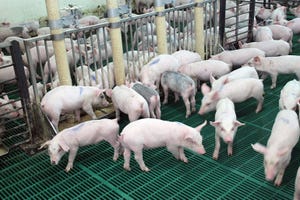On-farm conservation practices and systems in the Chesapeake Bay watershed seem to be reducing sediment and nutrient losses from cultivated cropland, according to a recent U.S. Department of Agriculture (USDA) study entitled, “Assessment of Conservation Practices on Cultivated Cropland in the Chesapeake Bay Region.” The study quantifies environmental gains and identifies opportunities for further progress during a time when the region’s farmers are working to meet Total Maximum Daily Load (TMDL) guidelines.
April 14, 2011

On-farm conservation practices and systems in the Chesapeake Bay watershed seem to be reducing sediment and nutrient losses from cultivated cropland, according to a recent U.S. Department of Agriculture (USDA) study entitled, “Assessment of Conservation Practices on Cultivated Cropland in the Chesapeake Bay Region.” The study quantifies environmental gains and identifies opportunities for further progress during a time when the region’s farmers are working to meet Total Maximum Daily Load (TMDL) guidelines.
“Agriculture plays an important role in protecting water quality and maintaining economic stability in this watershed,” explains Dave White, chief of the USDA Natural Resources Conservation Service (NRCS). “This study confirms that farmers are reducing sediment and nutrient losses from their fields. Our voluntary, incentives-based conservation approach is delivering significant and proven results. This study will help us improve our conservation practices in the Chesapeake Bay area.”
The study also helped identify opportunities for further reductions of sediment and nutrient losses from agriculture by focusing conservation activities on the most vulnerable acres. Key findings of the Conservation Effects Assessment Project (CEAP) study include:
Conservation practices have reduced edge-of-field losses of sediment by 55%, nitrogen in surface runoff by 42%, nitrogen in subsurface flow by 31%, and phosphorus by 40%.
Targeting enhances effectiveness and efficiency. Use of additional conservation practices on acres with a high need for additional treatment can reduce per-acre sediment and nutrient losses by more than twice that of treatment of acres with low or moderate conservation needs.
The study shows loss of nitrogen by leaching and overland flow is the most significant conservation concern on cultivated cropland in the watershed. Soil erosion and nutrient losses could simultaneously be addressed by suites of conservation practices that include soil erosion and comprehensive nutrient management.
The CEAP results will be used to prioritize conservation needs and results in the Chesapeake Bay Watershed. This is the second CEAP study for cultivated cropland. NRCS is the lead USDA agency for CEAP. The complete Chesapeake Bay cropland study report and findings from other CEAP studies can be found at www.nrcs.usda.gov/.
You May Also Like



